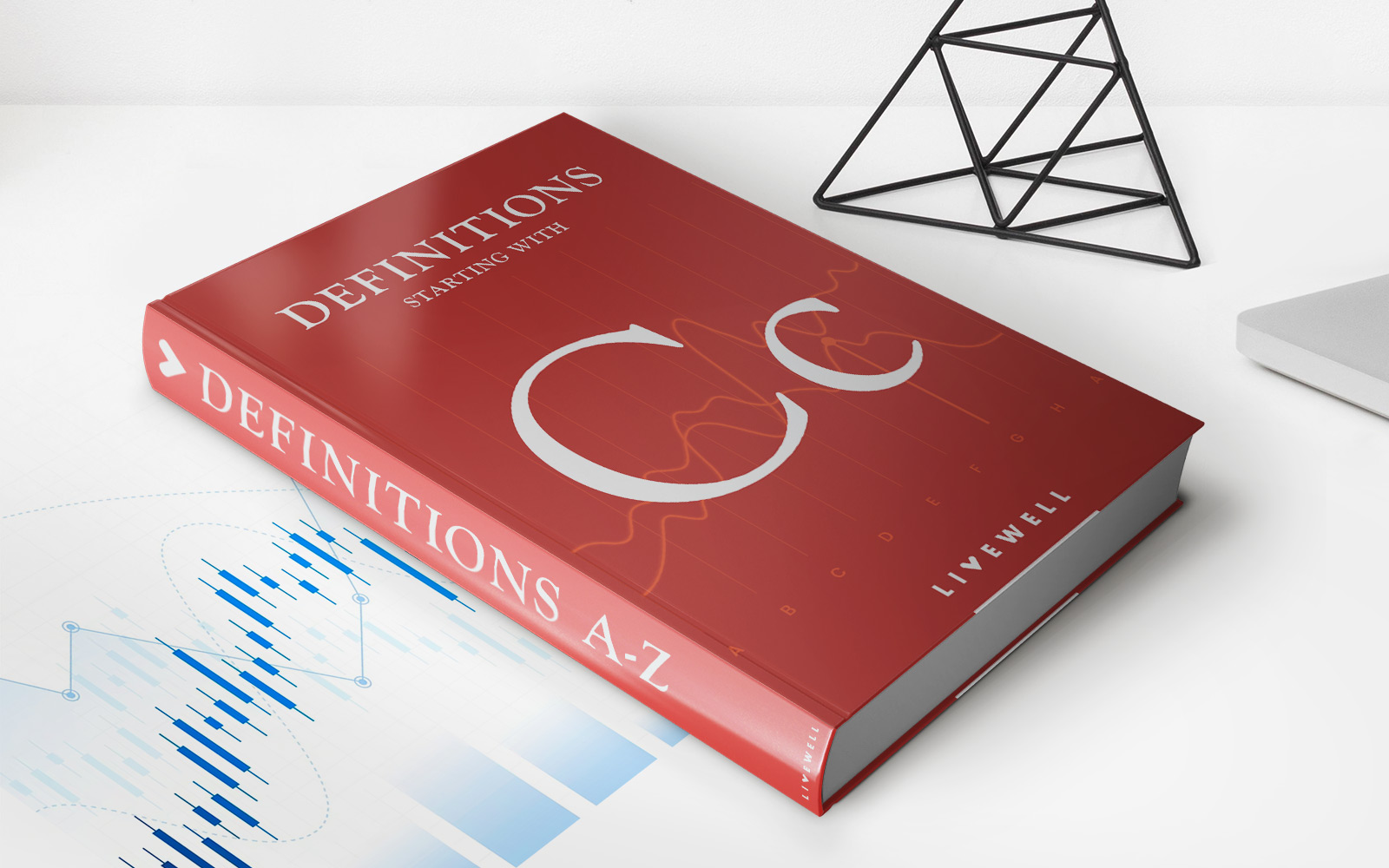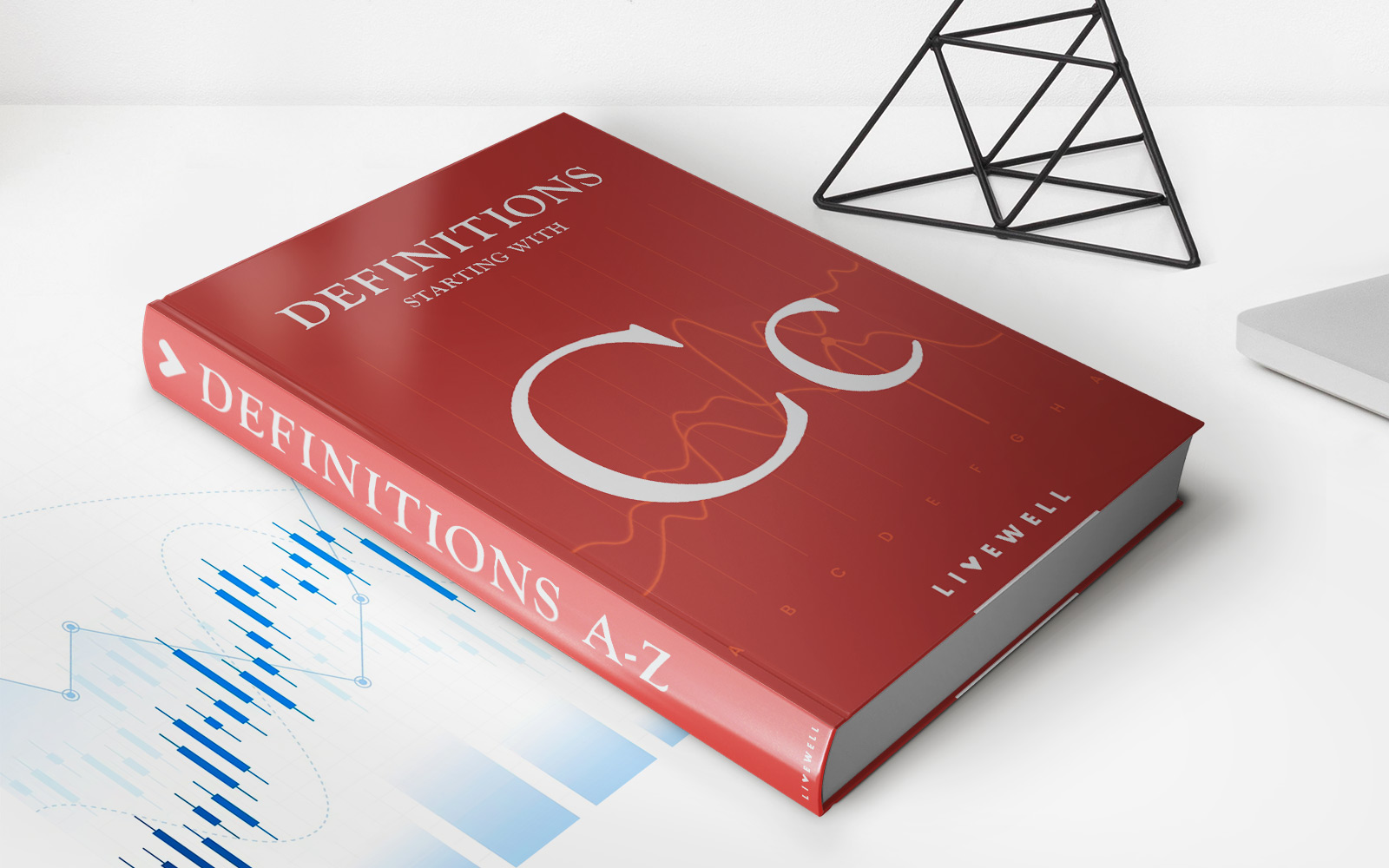

Finance
How To Determine The Optimal Capital Structure
Modified: February 21, 2024
Learn how to determine the optimal capital structure for your business with expert insights from the field of finance. Enhance your financial decision-making today!
(Many of the links in this article redirect to a specific reviewed product. Your purchase of these products through affiliate links helps to generate commission for LiveWell, at no extra cost. Learn more)
Table of Contents
- Introduction
- What is Capital Structure?
- Factors Affecting Capital Structure
- Debt vs Equity Financing
- Advantages of Debt Financing
- Advantages of Equity Financing
- Trade-Off Theory of Capital Structure
- Modigliani-Miller Theorem
- Determining Optimal Capital Structure
- Importance of Optimal Capital Structure
- Case Studies on Optimal Capital Structure
- Conclusion
Introduction
When it comes to running a business or managing a company, one of the key considerations is determining the optimal capital structure. The capital structure refers to the way a company finances its operations through a combination of debt and equity. It plays a crucial role in the financial stability and growth potential of a business.
Understanding the concept of capital structure is important because it offers insights into the financial health of a company and its ability to meet its financial obligations. By finding the right balance between debt and equity financing, companies can optimize their financial structure, minimize risks, and maximize returns for their shareholders.
However, determining the optimal capital structure is not a one-size-fits-all approach. It involves a careful assessment of various factors, including the nature of the business, industry dynamics, market conditions, and strategic goals. Additionally, different financing options come with their own advantages and trade-offs, making it essential to evaluate the pros and cons of each.
In this article, we will explore the concept of capital structure, analyze the factors that influence it, and discuss the advantages and considerations associated with debt and equity financing. We will also delve into the trade-off theory of capital structure and the Modigliani-Miller theorem. Finally, we will highlight the importance of determining the optimal capital structure and provide real-world case studies to illustrate its practical application.
By the end of this article, you will have a clear understanding of what capital structure entails and how it can impact the financial well-being of a company. So, let’s dive in and explore the world of capital structure!
What is Capital Structure?
Capital structure refers to the mix of different sources of long-term financing that a company uses to support its operations and investments. It represents the combination of debt and equity that a company utilizes to finance its assets and generate revenue.
Debt financing involves borrowing money from external sources, such as banks or issuing corporate bonds, with the promise of repaying it over a specific period of time, typically with interest. Equity financing, on the other hand, involves raising funds by selling ownership stakes in the company, either through issuing shares to investors or partnering with venture capitalists.
The capital structure of a company is important as it determines the level of financial risk and return for both the business and its investors. A well-designed capital structure can provide a company with the necessary financial stability to meet its obligations and pursue growth opportunities, while minimizing the cost of capital.
Companies have different options when it comes to developing their capital structure. They can choose to rely heavily on debt financing, which results in higher leverage but also greater financial risk. Alternatively, they can opt for a more equity-focused structure, which brings in more investments but dilutes ownership and reduces control.
It is worth noting that the optimal capital structure may vary across industries and companies. Factors such as the company’s growth prospects, profitability, cash flow stability, and industry norms all play a role in determining the most suitable capital structure for a specific organization.
In summary, capital structure refers to the way a company finances its operations and investments through a combination of debt and equity. It is a crucial aspect of financial management that impacts the risk and return profile of a business. By carefully considering various factors and making strategic financing choices, companies can create an optimal capital structure that supports their long-term growth and financial objectives.
Factors Affecting Capital Structure
The capital structure of a company is influenced by various factors that shape its financial decisions and determine the mix of debt and equity financing. These factors can be internal or external to the organization and play a significant role in determining the optimal capital structure. Let’s explore some of the key factors that influence capital structure decisions:
- Business Risk: The level of business risk associated with a company’s operations can impact its capital structure. Businesses operating in volatile or cyclical industries may choose to have a lower debt-to-equity ratio to reduce the risk of financial distress during economic downturns.
- Industry Norms: Different industries have varying capital structure norms. For example, capital-intensive industries such as manufacturing or infrastructure may rely more on debt financing to fund their operations and investments, while technology startups often opt for equity financing to fuel their growth.
- Financial Flexibility: The level of financial flexibility desired by a company can also influence its capital structure. A company that wants to maintain a higher degree of financial flexibility may opt for a lower level of debt to avoid restrictive loan covenants and preserve its ability to access additional financing options in the future.
- Tax Considerations: The tax laws and regulations of a country can impact capital structure decisions. Debt financing, for instance, offers the benefit of interest payments being tax-deductible, making it an attractive option for companies looking to lower their overall tax liabilities.
- Growth Opportunities: The growth prospects and investment opportunities available to a company can also influence its capital structure. Companies with significant growth potential may choose to finance their expansion through equity financing to avoid the burden of high debt and interest payments.
- Cost of Capital: The cost of capital, which is the required return on investment for shareholders and lenders, is another important factor in determining capital structure. If debt is available at a lower interest rate compared to the expected return on equity, a company may choose to increase its debt levels to take advantage of the lower cost of financing.
These are just a few of the factors that can influence a company’s capital structure decisions. It is important for companies to carefully analyze these factors and strike a balance between risk and return to develop an optimal capital structure that aligns with their strategic goals and financial needs.
Debt vs Equity Financing
When it comes to financing their activities, businesses have two primary options: debt financing and equity financing. Both approaches have their advantages and trade-offs, and understanding the differences between them is crucial in determining the optimal capital structure. Let’s delve into debt and equity financing:
Debt Financing:
Debt financing involves borrowing funds from external sources, such as banks, financial institutions, or issuing corporate bonds. The borrowed capital must be repaid over a specified period of time, often with interest. Some key characteristics of debt financing include:
- Fixed Obligation: When a company takes on debt, it assumes a fixed obligation to make regular interest payments and repay the principal amount on time. It provides a clear timeline for repayment, making it easier for companies to plan their cash flows.
- Interest Payments: In addition to the principal amount, debt financing requires companies to make regular interest payments to the lenders. These interest payments are tax-deductible, which can provide a financial advantage for businesses.
- Lender Influence: When a company borrows money, lenders often exert certain control and influence on the business. They may impose financial ratios, covenants, or restrictions that the company must adhere to, ensuring that the borrowed funds are utilized responsibly.
- Financial Risk: While debt financing can provide immediate access to capital, it also increases the financial risk for a company. Failure to meet interest payments or repay the debt can result in penalties, downgrades in credit ratings, and even bankruptcy.
Equity Financing:
Equity financing involves raising funds by selling ownership stakes in the company. This can be done through issuing shares to investors or seeking venture capital investments. Key features of equity financing include:
- Ownership Dilution: Equity financing requires companies to sell a portion of their ownership in exchange for the capital raised. This can dilute the control and ownership of existing shareholders, as new investors become part owners of the company.
- No Fixed Obligation: Unlike debt financing, equity financing does not carry the obligation of making fixed interest or principal payments. Investors receive returns on their investment through dividends or capital appreciation when they sell their shares.
- Risk Sharing: Equity investors assume a portion of the business risk and share in the company’s profits. This can provide a cushion for the company during difficult times, as losses are distributed among the shareholders.
- Flexibility: Equity financing offers companies more flexibility compared to debt financing. There are no restrictive covenants or ratios to comply with, allowing companies to utilize the capital as they deem fit.
Ultimately, the choice between debt and equity financing depends on various factors, including the business’s financial situation, growth prospects, risk tolerance, and market conditions. Businesses must carefully consider these options and strike the right balance to develop an optimal capital structure that supports their long-term goals.
Advantages of Debt Financing
Debt financing offers several advantages to businesses looking to raise capital. It can be a valuable tool for companies seeking to fund their operations, investments, or expansion. Let’s explore some of the key advantages of debt financing:
- Interest Tax Deductible: One of the significant advantages of debt financing is that the interest payments made by a company are tax-deductible. This reduces the overall tax liability for the business and can result in substantial savings.
- Lower Cost of Capital: Debt financing often comes with a lower cost of capital compared to equity financing. Lenders typically charge interest rates that are lower than the expected return on equity. By using debt, companies can lower their overall cost of capital and potentially increase profitability.
- Fixed Repayment Terms: When a company borrows funds, it sets specific repayment terms, including the principal amount and interest. This fixed obligation allows businesses to plan their cash flows effectively and provide certainty to investors and lenders.
- No Dilution of Ownership: Unlike equity financing, debt financing does not result in dilution of ownership. Companies can maintain full control and ownership of their business while enjoying the benefits of borrowed funds.
- Business Retains Profits: With debt financing, the company retains all the profits generated by its operations. Lenders do not participate in the company’s equity, meaning all earnings belong entirely to the owners.
- Increased Leverage: Debt financing allows companies to amplify their returns on investment. By utilizing borrowed funds, businesses can invest in projects that have a higher rate of return than the cost of borrowing, potentially increasing profitability.
It is important to note that while debt financing offers several advantages, it also carries some risks. The burden of debt payment can become a challenge, especially if a company faces financial difficulties or encounters a downturn in business. It is crucial for businesses to carefully assess their ability to service the debt and ensure that they can meet their financial obligations.
Overall, debt financing can be an attractive financing option for companies looking to raise capital. By taking advantage of the tax benefits, lower cost of capital, and flexibility it offers, businesses can fund their activities while maintaining control and optimizing their financial structure.
Advantages of Equity Financing
Equity financing provides businesses with a unique set of advantages when it comes to raising capital. It offers a way for companies to secure funds without incurring debt or making fixed payment obligations. Let’s explore some of the key advantages of equity financing:
- No Repayment Obligations: Unlike debt financing, equity financing does not require companies to make regular interest or principal payments. Investors who provide equity capital do not expect immediate financial returns, allowing businesses to focus on long-term growth and profitability.
- Shared Risk and Responsibility: Equity investors share the risk and responsibility of the business. If the company faces financial challenges or experiences losses, the burden is shared among the shareholders, allowing the business to navigate through difficult times with greater stability.
- Access to Expertise and Networks: Equity investors often bring more than just capital to the table. They can provide valuable industry expertise, guidance, and networks that can help the business grow and expand. Additionally, having reputable investors can enhance the credibility and reputation of the company.
- Potential for Higher Returns: Equity investors participate in the company’s success and growth. If the business performs well and increases in value, equity investors can enjoy significant capital appreciation or dividends, providing the potential for higher returns compared to fixed interest payments.
- No Debt Burden: With equity financing, businesses do not take on any debt, which means they have no financial obligations to repay borrowed capital. This frees up cash flow and reduces the risk of bankruptcy or insolvency due to an inability to meet debt obligations.
- Flexibility in Resource Allocation: Equity financing offers businesses more flexibility in how they allocate their resources. As there are no specific repayment terms or restrictions attached to equity funding, companies can utilize the capital as they see fit, whether it be for investment in new projects, research and development, or operational expenses.
However, it’s important to note that equity financing also has its drawbacks. Selling ownership stakes in the company results in dilution of control and decision-making power. Additionally, disclosing financial and strategic information to potential investors may lead to a decrease in confidentiality. Businesses must carefully consider these factors and evaluate the balance between the advantages and trade-offs of equity financing.
Overall, equity financing provides businesses with a valuable source of capital while sharing the risk and potential rewards with investors. It can offer flexibility, expertise, and the potential for greater returns, making it an appealing option for businesses seeking capital for growth and expansion.
Trade-Off Theory of Capital Structure
The trade-off theory of capital structure proposes that companies face a trade-off between the benefits and costs associated with debt financing. According to this theory, businesses strive to find the optimal capital structure that maximizes their value by balancing the advantages and disadvantages of debt and equity financing.
The key principle of the trade-off theory is that debt financing provides certain benefits, such as tax advantages, lower cost of capital, and increased financial leverage. However, it also comes with costs and risks, including interest payments, potential financial distress, and loss of control due to debt covenants. On the other hand, equity financing offers advantages such as no repayment obligations, shared risk, and flexibility, but it dilutes ownership and can result in higher costs of capital.
Companies aim to strike a balance between the costs and benefits of different financing options to find their optimal capital structure. This balancing act involves evaluating factors such as the company’s risk profile, tax environment, growth opportunities, and the availability and cost of debt and equity financing.
One of the main drivers of the trade-off theory is the tax advantage of debt financing. Interest payments made on debt are tax-deductible, resulting in a lower tax liability for the company. This tax shield provides a financial benefit that lowers the overall cost of debt financing. However, if a company takes on too much debt and becomes highly leveraged, the risk of financial distress increases, and creditors may view the business as risky. This can lead to higher borrowing costs and a decrease in the firm’s value.
Another aspect of the trade-off theory is the consideration of agency costs. When a company uses equity financing, ownership is shared with external investors, which creates a separation between owners and managers. This separation can lead to conflicts of interest and agency costs, as managers may prioritize their own interests over those of the shareholders. Debt financing, with its fixed payment obligations, can serve as a disciplining mechanism to align the interests of managers and shareholders, as failure to meet debt obligations can result in severe consequences for the company.
The trade-off theory recognizes that the optimal capital structure may vary between companies and industries, depending on their unique characteristics and circumstances. For instance, companies with stable cash flows and low business risk may opt for higher debt levels to take advantage of the tax benefits and lower costs. On the other hand, companies operating in volatile or cyclical industries may prefer a more conservative capital structure with lower debt levels to mitigate the risk of financial distress during economic downturns.
In summary, the trade-off theory of capital structure suggests that companies must carefully balance the advantages and costs of different financing options to determine their optimal capital structure. By considering factors such as tax advantages, financial leverage, risk profile, and agency costs, businesses can make informed decisions that enhance their value and support their long-term growth objectives.
Modigliani-Miller Theorem
The Modigliani-Miller theorem, also known as the M&M theorem, is a cornerstone of modern finance that addresses the relationship between a company’s capital structure and its value. Developed by economists Franco Modigliani and Merton Miller in the 1950s and 1960s, the theorem provides important insights into the capital structure decisions of firms.
The fundamental principle of the Modigliani-Miller theorem is that, under certain conditions, the market value of a company is independent of its capital structure. In other words, in a perfect and efficient capital market, the way a company chooses to finance its operations (through debt, equity, or a combination of both) should not impact its overall market value.
Modigliani and Miller made two key assumptions to derive their theorem:
- No Taxes: The original version of the Modigliani-Miller theorem assumes a world without corporate taxes. This means that interest payments on debt are not tax-deductible, and there are no tax advantages to debt financing.
- No Financial Distress Costs: The theorem also assumes that there are no costs associated with financial distress or bankruptcy. In reality, financial distress can lead to increased borrowing costs, legal expenses, and damage to a company’s reputation and relationships with stakeholders.
Based on these assumptions, the Modigliani-Miller theorem argues that investors can replicate a company’s capital structure by using a combination of personal borrowing and lending. Therefore, a company’s value is determined by its underlying business operations, growth prospects, and cash flow generation, rather than the specific mix of debt and equity financing it employs.
Although the Modigliani-Miller theorem provides valuable theoretical insights into capital structure decisions, it is worth noting that real-world capital markets may deviate from these ideal conditions. Corporate taxes, asymmetrical information, and agency costs can all influence the choices and preferences of market participants, impacting a company’s financing decisions and market value.
Despite these deviations, the Modigliani-Miller theorem remains a useful reference point for understanding the principles underlying capital structure decisions. It reinforces the importance of considering the overall value and financial characteristics of a company when making financing choices, rather than solely focusing on the optimal mix of debt and equity.
In summary, the Modigliani-Miller theorem asserts that, in an ideal world without taxes and financial distress costs, a company’s capital structure does not impact its market value. While the theorem provides a theoretical framework for analyzing capital structure decisions, it is essential to recognize the real-world complexities and considerations that may influence a company’s financing choices.
Determining Optimal Capital Structure
Determining the optimal capital structure is a critical decision for businesses as it directly affects their financial health, risk profile, and ability to achieve long-term growth. While there isn’t a one-size-fits-all approach to finding the perfect capital structure, there are several key considerations that companies should evaluate to determine what works best for them.
Here are some factors to consider when determining the optimal capital structure:
- Business Risk Profile: Companies need to assess their risk profile, taking into consideration factors such as industry stability, market conditions, and future growth prospects. Industries with higher business risk may prefer a more conservative capital structure with lower levels of debt to mitigate potential financial distress during economic downturns.
- Cash Flow Stability: Cash flow stability plays a crucial role in determining the amount of debt a company can comfortably handle. Businesses with stable and predictable cash flows have a higher capacity to service debt payments, making higher debt levels more feasible and potentially advantageous in terms of tax benefits and lower cost of capital.
- Growth Opportunities: Companies with significant growth prospects may opt for a capital structure that accommodates their future financing needs. Equity financing can be a suitable choice for financing expansion plans and capital-intensive projects, allowing businesses to access the necessary funds without overburdening their balance sheets with excessive debt.
- Industry Norms and Peer Analysis: Analyzing industry practices and conducting peer analysis can provide valuable insights into the capital structures of companies operating in the same sector. Understanding the prevailing industry norms can help businesses identify potential benchmarks and evaluate whether their capital structure is aligned with industry standards or needs adjustment.
- Cost of Capital: Assessing the cost of debt and equity financing is crucial in determining the optimal capital structure. Companies should compare the expected return on equity with the cost of debt to identify the most cost-effective mix. A lower cost of capital can enhance profitability and overall value for shareholders.
- Tax Considerations: Evaluating the tax implications of various financing options is essential. Debt financing provides the advantage of interest payments being tax-deductible, reducing the overall tax liability for the business. Companies should carefully assess the tax benefits and potential savings associated with debt financing, as they can significantly impact the overall cost of capital.
It’s important to note that the optimal capital structure may change over time as market conditions, business circumstances, and financing opportunities evolve. Regular assessments and refinements to the capital structure are essential to ensure that it remains aligned with the company’s objectives and provides the necessary financial flexibility.
Ultimately, determining the optimal capital structure requires a comprehensive analysis of various factors and a deep understanding of the company’s financial dynamics and strategic goals. By striking the right balance between debt and equity financing and considering specific business characteristics, companies can create a capital structure that supports sustainable growth, manages risk effectively, and maximizes shareholder value.
Importance of Optimal Capital Structure
Establishing an optimal capital structure is of paramount importance for businesses as it has significant implications for their financial stability, growth prospects, and overall value. Here are key reasons why determining the optimal capital structure is crucial:
- Financial Stability: An optimal capital structure helps ensure the financial stability of a company. By managing the right mix of debt and equity, businesses can meet their financial obligations, such as debt repayments and interest payments, without jeopardizing their cash flow or risking default. This stability provides confidence to investors, lenders, and stakeholders in the company’s ability to weather financial challenges effectively.
- Cost of Capital: The capital structure impacts the cost of capital for a business. By finding an optimal balance between debt and equity financing, companies can minimize the overall cost of capital. Debt financing generally offers lower interest rates compared to the expected returns on equity. Thus, incorporating an efficient capital structure can lead to lower borrowing costs, improving profitability and competitiveness.
- Maximizing Shareholder Value: An optimal capital structure contributes to maximizing shareholder value. By attaining an appropriate financing mix, companies can utilize available funds efficiently to pursue growth opportunities and strategic initiatives. This can lead to increased profits, higher stock prices, and improved returns for shareholders.
- Flexibility and Growth Potential: A well-designed capital structure provides businesses with the financial flexibility to seize growth opportunities. It allows companies to access funds when needed, whether through debt or equity financing, to invest in research and development, expand into new markets, or acquire assets. This flexibility enables sustained growth and competitiveness in a dynamic business environment.
- Minimizing Financial Risk: Optimal capital structure helps manage financial risk effectively. By considering the risk profile and cash flow stability of the business, companies can avoid excessive leverage that may lead to financial distress during economic downturns or unforeseen market disruptions. Maintaining a balanced capital structure helps mitigate the risk of default, protects the company’s reputation, and ensures the availability of future financing options.
- Alignment with Strategic Goals: Determining the optimal capital structure ensures that financing decisions align with the company’s strategic objectives. Whether it’s prioritizing long-term growth, minimizing risk, or enhancing profitability, the capital structure sets the foundation for achieving these goals. It allows companies to allocate resources appropriately and make informed decisions regarding capital investments and expansions.
In summary, establishing an optimal capital structure is critical for businesses to maintain financial stability, optimize costs, maximize shareholder value, and seize growth opportunities. By carefully considering various factors such as risk profile, cost of capital, and growth potential, companies can strike the right balance between debt and equity financing and create a financial structure that supports their long-term success.
Case Studies on Optimal Capital Structure
Examining case studies of companies that have successfully determined their optimal capital structure can provide valuable insights into the practical application of capital structure decisions. Here are a few notable examples:
- Apple Inc.: Apple has employed a capital structure that heavily relies on equity financing. Despite being a technology giant with significant growth potential and lucrative projects, Apple has maintained a low level of debt compared to its equity. This decision allows the company to minimize financial risk and enjoy the flexibility to invest in research and development, expand product lines, and pursue strategic acquisitions.
- The Coca-Cola Company: Coca-Cola employs a capital structure that strikes a balance between debt and equity financing. The company has utilized debt financing to optimize its cost of capital while maintaining a solid credit rating. With a stable and well-established cash flow, Coca-Cola has managed to leverage debt to fund expansion efforts and acquire various beverage brands, achieving growth while maintaining financial stability.
- Tesla Inc.: Tesla’s capital structure is notable for its reliance on equity financing. As a leading electric vehicle manufacturer and innovator, Tesla has raised significant equity capital to fuel its ambitious growth plans. By avoiding excessive debt, Tesla has been able to retain flexibility and mitigate financial risk, enabling the company to invest in new technologies, expand manufacturing capabilities, and revolutionize the automotive industry.
- Johnson & Johnson: Johnson & Johnson, a healthcare conglomerate, has maintained a capital structure that emphasizes a conservative debt-to-equity ratio. The company’s focus on stability and consistent cash flow has allowed it to raise debt at low interest rates while maintaining a strong credit rating. This balanced approach has supported steady growth, diversified product lines, and the ability to invest in research and development, ensuring long-term sustainability.
- Amazon.com Inc.: Amazon.com has employed a capital structure that blends debt and equity financing. The company has strategically utilized debt to fund acquisitions, expand its fulfillment centers, and invest in new technology ventures. By taking advantage of the tax deductibility of interest payments, Amazon.com has optimized its cost of capital while maintaining strong financial flexibility to support its aggressive growth strategies.
These case studies highlight the importance of designing a capital structure that aligns with a company’s specific objectives, risk tolerance, and industry dynamics. By evaluating factors such as growth prospects, cash flow stability, and financing costs, companies can determine their optimal capital structure and utilize it as a strategic tool for sustainable growth and financial success.
It is important to note that each company’s optimal capital structure depends on its unique circumstances and goals. Other factors, such as changes in market conditions, regulatory environments, and business strategies, can also influence capital structure decisions over time.
By analyzing case studies and drawing insights from successful companies, businesses can gain valuable perspectives and strategies to inform their own capital structure decisions and enhance their financial performance.
Conclusion
Optimizing the capital structure is a crucial aspect of financial management for businesses. By carefully assessing various factors and striking a balance between debt and equity financing, companies can create an optimal capital structure that supports their long-term growth and financial objectives.
The capital structure of a company impacts its financial stability, growth potential, cost of capital, and overall value. Debt financing offers advantages such as tax benefits, lower cost of capital, and fixed repayment terms. Equity financing, on the other hand, provides flexibility, shared risk, and potential for higher returns.
Factors that influence the determination of an optimal capital structure include business risk, industry norms, financial flexibility, tax considerations, growth opportunities, and the cost of capital. Companies must carefully evaluate these factors to determine the most suitable capital structure for their unique circumstances and goals.
While the Modigliani-Miller theorem suggests that capital structure is irrelevant in an ideal world, real-world considerations such as taxes and financial distress costs can impact financing decisions. However, the theorem provides valuable insights into the overall principles of capital structure decisions.
Ultimately, establishing an optimal capital structure brings several benefits, including financial stability, maximizing shareholder value, managing financial risk, and accessing growth opportunities. Through a comprehensive analysis of their risk profile, growth prospects, and financing requirements, companies can develop a capital structure that enhances their competitiveness and long-term sustainability.
Case studies of successful companies further demonstrate how optimizing capital structure contributes to their growth and success. By examining their strategies and approaches, businesses can gain valuable insights and learn from practical examples.
In conclusion, determining the optimal capital structure is a complex yet essential task for businesses. By carefully considering the various factors discussed in this article and evaluating their specific circumstances, companies can establish a capital structure that positions them for financial success, supports their growth objectives, and creates value for their stakeholders.














